This Century-Old Map Details the Path to Musical Success
Tips to avoid the River of Failure.
Theodore Presser’s how-to guide for musical success. (Photo: PJ Mode Collection at Cornell’s Digital Library/CC BY-SA 3.0)
When it comes to finding success, practice does really make perfect.
That’s the message behind this 1913 allegorical map entitled “The Road to Success,” a drawing that turns the figurative journey towards artistic triumph into a cartographic depiction of an actual climb towards victory.
The map appeared first in an October 1913 edition of The Etude, a magazine covering musical topics that was also known as Presser’s Musical Magazine, named for its editor Theodore Presser.

Map collector PJ Mode, whose more than 800 maps are being added to a Cornell University digital collection, says the editor’s finicky ways informed the content of the map. “Mr. Presser had his own method for teaching people how to be musicians. And if you look carefully at this map, you’ll see there’s something about the people who don’t have method, don’t have technique,” Mode says. “They fall into the pit.”

The rapids in the River of Failure are no joke. (Photo: PJ Mode Collection at Cornell’s Digital Library/CC BY-SA 3.0)
Taking shortcuts won’t get you anywhere except to the bottom of the River of Failure, which threatens to sweep away anyone who’s not up to the challenge of putting in hard work. And don’t just blow hot air, or you’ll end up in the clouds.
Among other moral failings that will interrupt your climb to the top are the pit of Illiteracy, a Bad Habits fan that blows you backwards, a daunting mountain called Lack of Preparation, and the distracting Café Bohemianism. Check into Hotel Know-It-All if you like, but don’t expect to ever leave.

Some people just can’t be helped. (Photo: PJ Mode Collection at Cornell’s Digital Library/CC BY-SA 3.0)
“But if you follow the method, then you get to success,” Mode says. “And you notice that success at the top has this musical symbol.”
How to do it, according to Presser? Board the train to success at the Right System station, pursue True Knowledge, which leads you on a path up the Lack of Preparation mountain, and on through the Gate of Ideals.
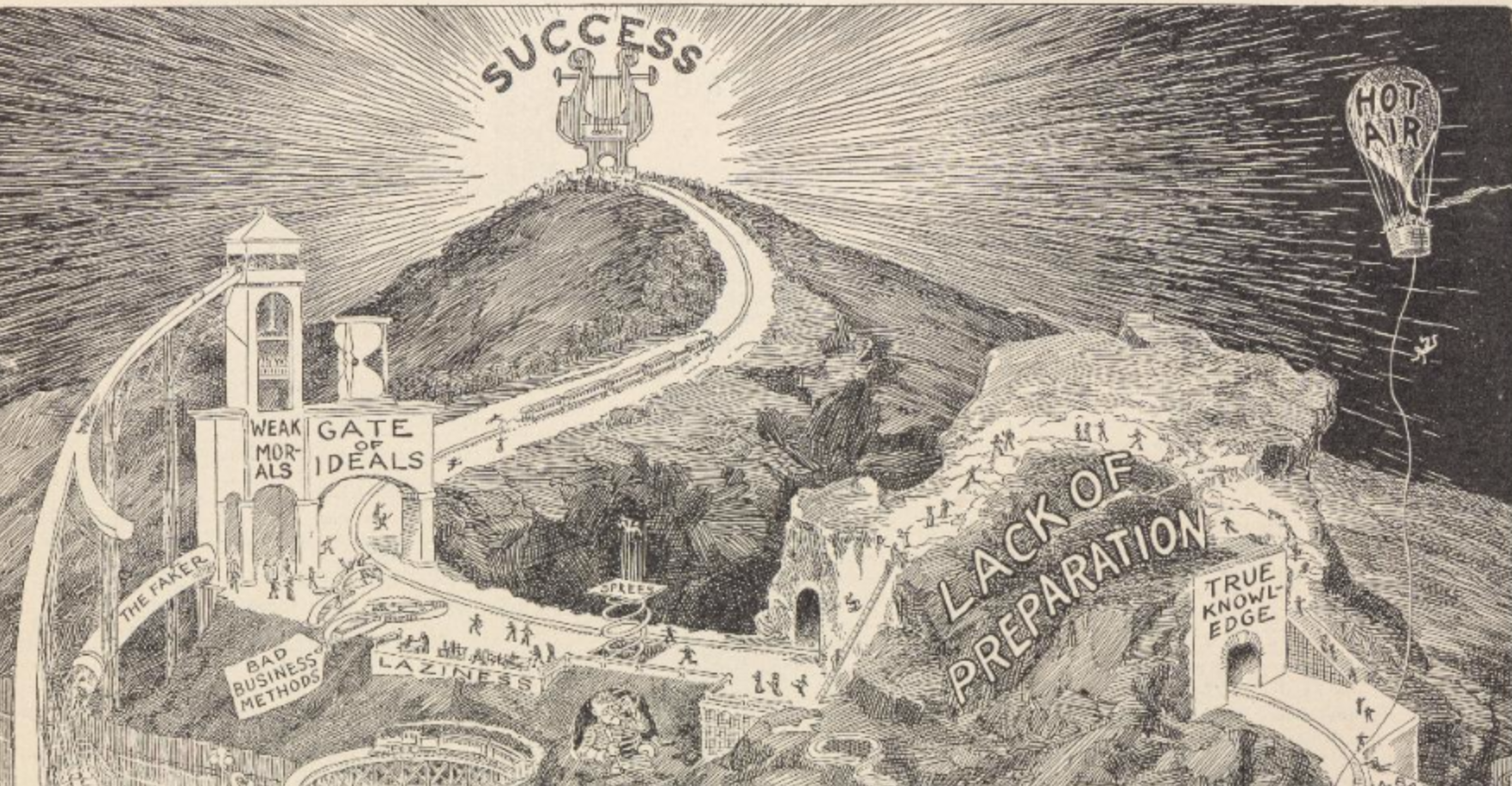 It’s a long climb to the top. (Photo: PJ Mode Collection at Cornell’s Digital Library/CC BY-SA 3.0)
It’s a long climb to the top. (Photo: PJ Mode Collection at Cornell’s Digital Library/CC BY-SA 3.0)
It’s no secret that “The Road to Success” map resembles earlier religious allegorical maps, what Mode called “how-to guides for being a Christian.”
These included John Bunyan’s 1850 “The Road from the City of Destruction to the Celestial City” and EB and EC Kellogg’s “Illustrative Map of Human Life” from 1847, which featured blasphemous geographic zones such as the Sea of Worldly Pleasure and the Mountains of Sin.
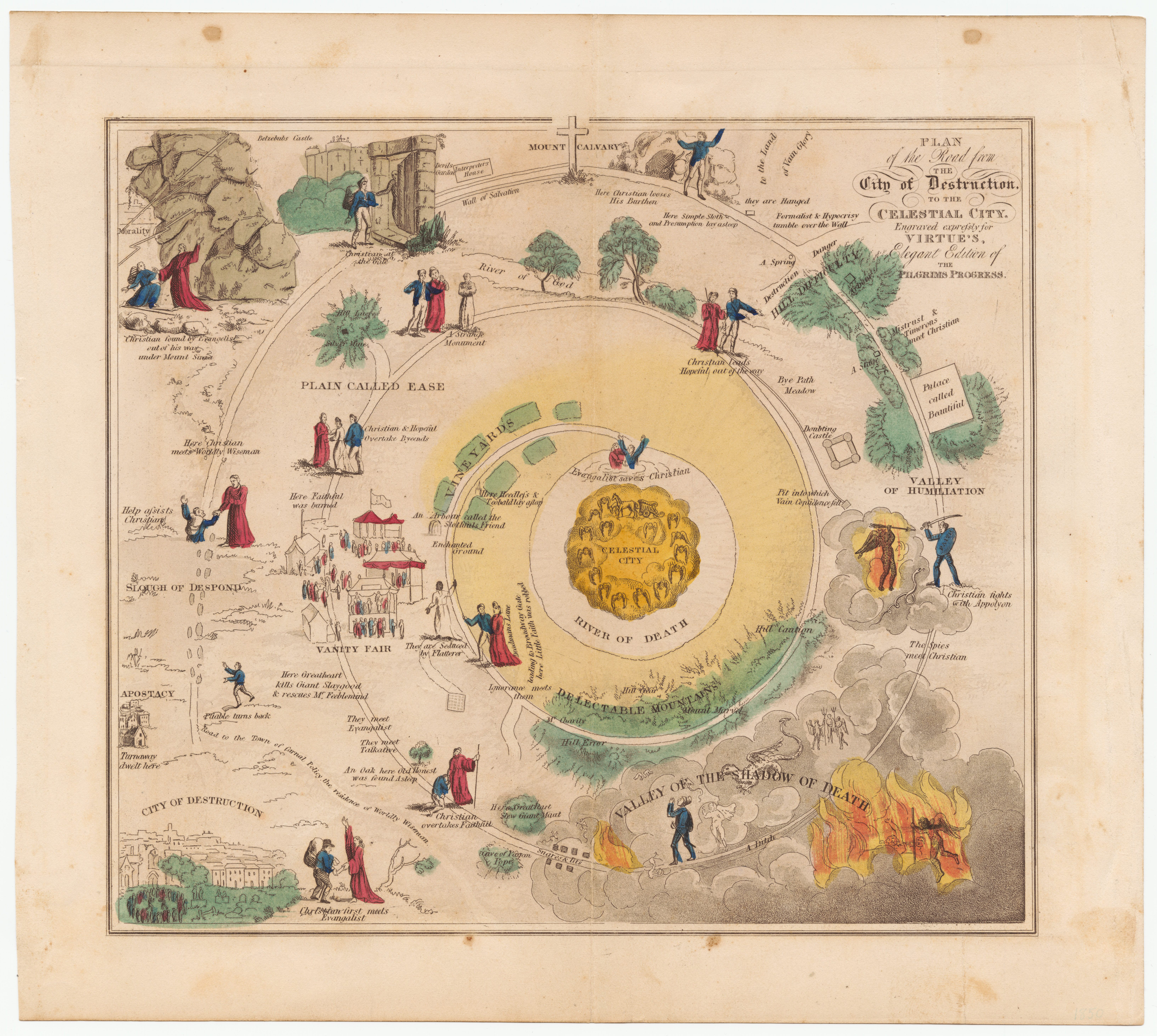
“The Road from the City of Destruction to the Celestial City,” an earlier religious allegorical map that informed maps like the “Road to Success.” (Photo: PJ Mode Collection at Cornell’s Digital Library/CC BY-SA 3.0.)
“It’s interesting that there’s a link between those maps, which are religious—they’re intended to reinforce religious values—and [allegorical maps like this], which are about the conduct of life, but not so explicitly religious,” says Mode.
“They all have the theme of an allegorical journey to get to where you want to go, whether it’s heaven or it’s happiness and success.”
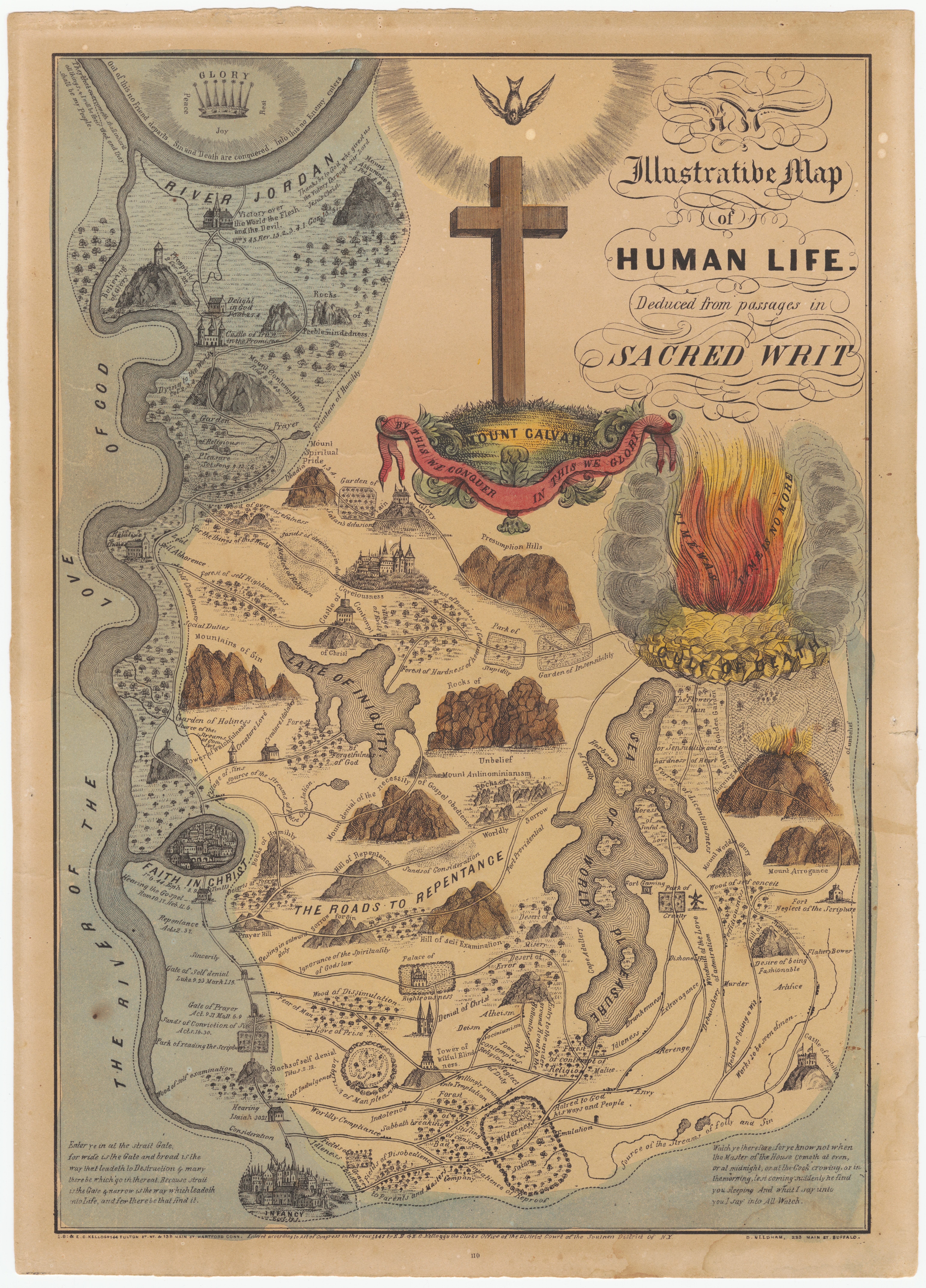
“Illustrative Map of Human Life.” (Photo: PJ Mode Collection at Cornell’s Digital Library/CC BY-SA 3.0)
But the resemblance to an earlier drawing by the National Cash Register Company that appeared in a 1913 edition of the Willmar Tribune is even more uncanny.
In fact, “The Road to Success” borrowed elements almost directly from it (Presser cited his source). This map that served as inspiration, entitled “Picture Sermon to Men and Boys—Illustrating the Difficulties on the Road to Success” was originally intended to illustrate how to be a successful businessman, and Presser adapted it to suit musical education.
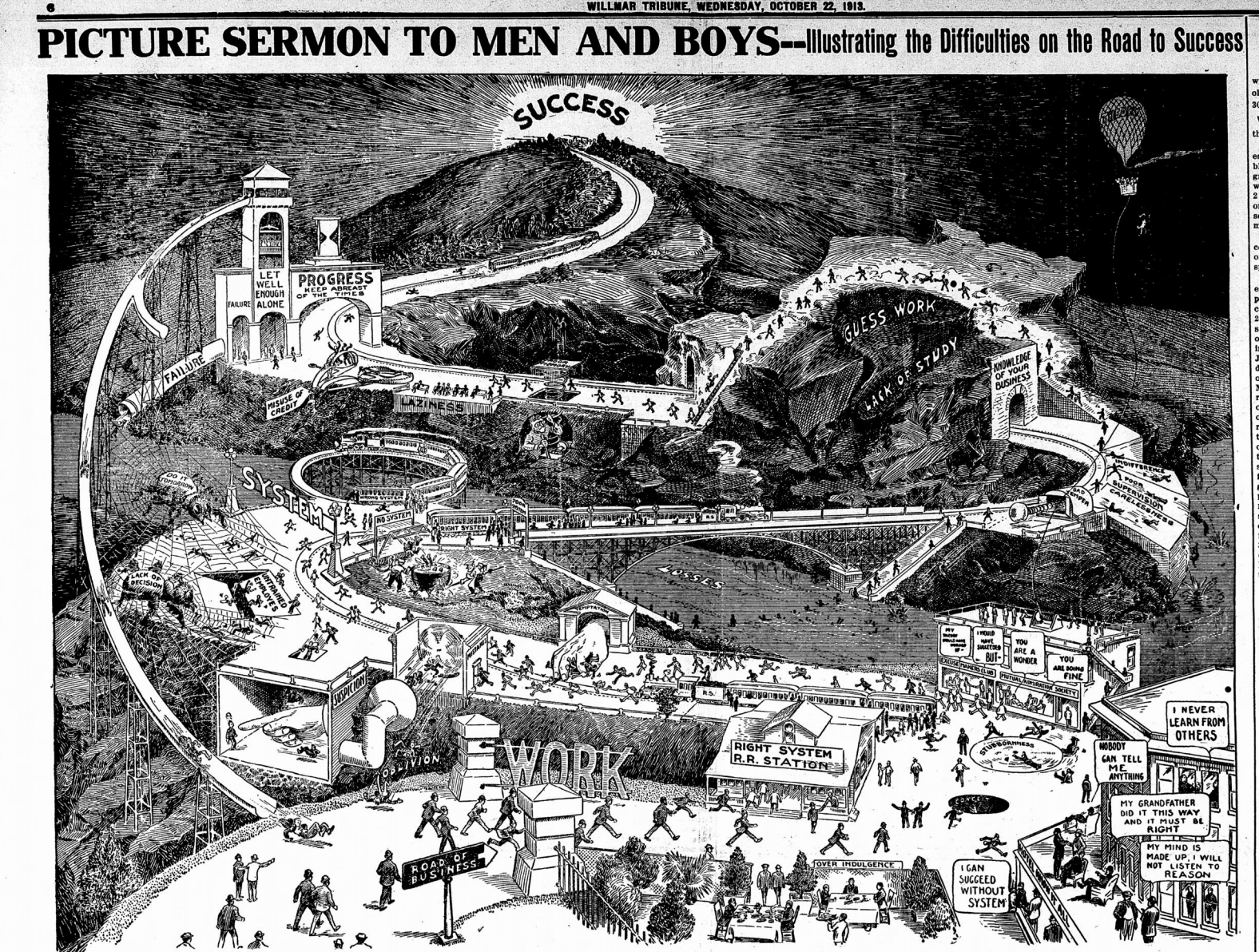 The business-oriented map that inspired Presser. (Photo: Willmar Tribune, October 1913/Chronicling America/Library of Congress)
The business-oriented map that inspired Presser. (Photo: Willmar Tribune, October 1913/Chronicling America/Library of Congress)So next time you think you’ll just “Do It Tomorrow,” think twice—before you get caught in the web of a giant spider that will eat you alive.
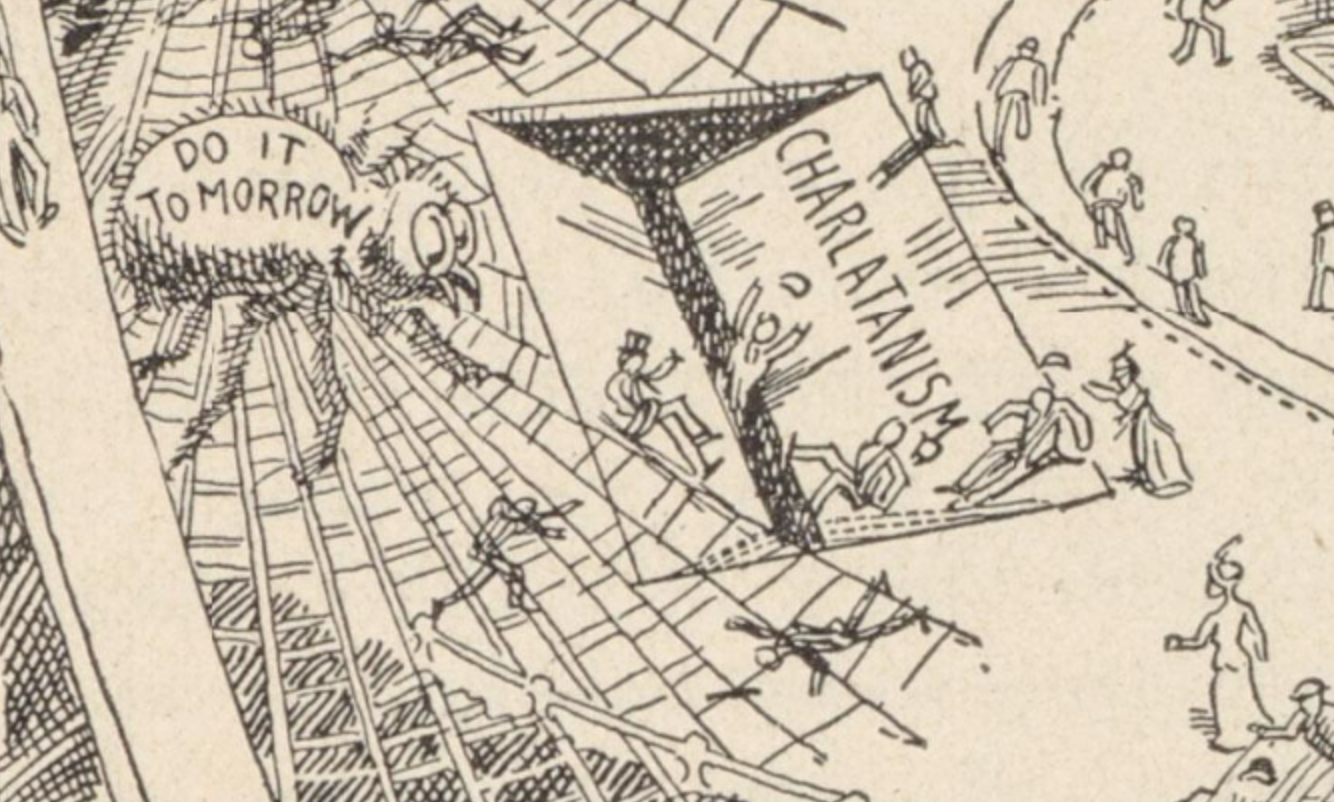 Beware of arachnids that will swallow you whole if you procrastinate. (Photo: PJ Mode Collection at Cornell’s Digital Library/CC BY-SA 3.0)
Beware of arachnids that will swallow you whole if you procrastinate. (Photo: PJ Mode Collection at Cornell’s Digital Library/CC BY-SA 3.0)Map Monday highlights interesting and unusual cartographic pursuits from around the world and through time. Read more Map Monday posts.














Follow us on Twitter to get the latest on the world's hidden wonders.
Like us on Facebook to get the latest on the world's hidden wonders.
Follow us on Twitter Like us on Facebook